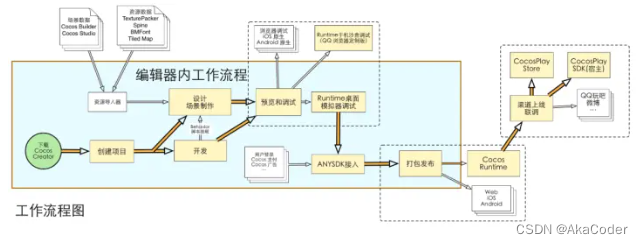开篇
今天在修改项目的时候,看见enum中出现了<<操作符(位操作),之前对这个一直都不了解。这次趁着项目比较清闲,抽出时间来全面了解一下位操作。
位操作
位操作是对二进制数逐位进行运算或移位。它共包含两种操作:位运算和移位。下面就详细的了解一下这两种操作。
在此只讨论iOS中的所有位操作的运算符,别的语言的相同含义的操作符号可能不同
位运算符(以下操作符皆同Objective-C)
位运算符一种包含下面几种:
~(取反,一元操作符):它会对目标数字的二进制每位进行取反
let initialBits: UInt8 = 0b00001111 let invertedBits = ~initialBits // equals 11110000
|(按位或):它会对两个目标数字的相同位置数字进行或运算,规则:0和0为0;0和1为1;1和1为1
let targetNum = 5 // 101 let targetNum2 = 6 // 110 print(targetNum | targetNum2) //print 7 //targetNum: 101 //targetNum2: 110 //result: 111 (十进制 7)
&(按位与):它会对两个目标数字的相同位置数字进行与运算,规则:0和0为0;0和1为0;1和1为1
let targetNum = 5 // 101 let targetNum2 = 6 // 110 print(targetNum & targetNum2) //print 4 //targetNum: 101 //targetNum2: 110 //result: 100 (十进制 4)
^(异或):它会对两个目标数字的相同位置数字进行异或运算,如果不同则该位为1,否则该位为0。规则:如0和0为0;0和1为1;1和1为0
let targetNum = 5 // 101 let targetNum2 = 6 // 110 print(targetNum ^ targetNum2) //print 3 //targetNum: 101 //targetNum2: 110 //result: 011 (十进制 3)
移位
>>(右移):它会对目标数字按位右移x位
let targetNum = 5 // 101 print(targetNum >> 2) //print 1 //targetNum: 101 //右移2位 //result: 1 (十进制 1)
<<(左移):它会对目标数字按位左移x位(右边补0)
let targetNum = 5 // 101 print(targetNum << 2) //print 20 //targetNum: 101 //左移2位 //result: 10100 (十进制 20)
枚举中的位操作
通过上文我们了解了位操作的具体计算方式,接下来看一下在枚举中的具体应用。
枚举中的应用
定义枚举
OC
typedef NS_OPTIONS(NSInteger,CellExLineType) {
CellExLineTypeTopLong = 0,CellExLineTypeTopNone = 1 << 0,//十进制 1
CellExLineTypeBottomLong = 1 << 1,//十进制 2
CellExLineTypeBottomNone = 1 << 2,//十进制 4
};
Swift
struct CellExLineType: OptionSet {
let rawValue: Int
static let topLong = CellExLineType(rawValue: 0)
static let topNone = CellExLineType(rawValue: 1 << 0)
static let bottomLong = CellExLineType(rawValue: 1 << 1)
static let bottomNone = CellExLineType(rawValue: 1 << 2)
}
位操作在枚举中的作用
~(取反):用来剔除某个值
//OC self.lineType = CellExLineTypeTopNone; self.lineType |= CellExLineTypeBottomNone; self.lineType = self.lineType & ~CellExLineTypeTopNone; //self.lineTye 只包含CellExLineTypeBottomNone //Swift var lineType: CellExLineType = [.topNone,.bottomNone] lineType.remove(.topNone)
|(按位或):用来添加某个值
//OC self.lineType = CellExLineTypeTopNone; //self.lineType 包含CellExLineTypeTopNone self.lineType = self.lineType | CellExLineTypeBottomNone; //self.lineType 包含CellExLineTypeTopNone和CellExLineTypeBottomNone //Swift var lineType: CellExLineType = [.bottomNone] lineType.insert(.topNone)
&(按位与):用来检查是否包含某个值
//OC
if ((self.lineType & CellExLineTypeTopNone) == CellExLineTypeTopNone) {
NSLog(@"包含CellExLineTypeTopNone");
}
//Swift
var lineType: CellExLineType = [.topNone,.bottomNone]
if lineType.contains(.bottomNone) {
print("包含bottomNone")
}
^(异或):用来置反某个值(如果包含则剔除,如果不包含则添加)
//OC
self.lineType = CellExLineTypeTopNone | CellExLineTypeBottomNone; //self.lineType 包含CellExLineTypeTopNone和CellExLineTypeBottomNone
self.lineType = self.lineType ^ CellExLineTypeTopNone; //self.lineTye 只包含CellExLineTypeBottomNone
self.lineType = self.lineType ^ CellExLineTypeTopNone; //self.lineType 包含CellExLineTypeTopNone和CellExLineTypeBottomNone
//Swift
var lineType: CellExLineType = [.topNone,.bottomNone]
if lineType.contains(.topNone) {
lineType.remove(.topNone)
} else {
lineType.insert(.topNone)
}
在枚举中使用位操作我们可以方便的给一个属性值赋值多个值,比如下面的代码给lineType赋值了CellExLineTypeTopNone和CellExLineTypeBottomNone属性。这样我们就可以在lineType的set方法里面处理CellExLineTypeTopNone和CellExLineTypeBottomNone的情况。
//OC
- (void)setLineType:(CellExLineType)lineType {
_lineType = lineType;
if (lineType & CellExLineTypeTopNone) {
NSLog(@"top none");
}
if (lineType & CellExLineTypeBottomNone) {
NSLog(@"bottom none");
}
}
//Swift
var lineType: CellExLineType = [.topNone,.bottomNone]
if lineType.contains(.topNone) {
lineType.remove(.topNone)
}
if lineType.contains(.bottomNone) {
}
在系统中的许多Enum也是这么使用的,如UIViewAutoresizing、UIViewAnimationOptions等。
为什么要在枚举中使用位操作符?
- 在许多古老的微处理器上,位运算比加减运算略快,通常位运算比乘除法运算要快很多。在现代架构中,情况并非如此:位运算的运算速度通常与加法运算相同(仍然快于乘法运算)
- 可以给一个属性同时设置多个值
总结
- ~(按位取反):对目标数字按位取反;在枚举中用于剔除某个值
- |(按位或):对两个目标数字同位置上数字进行或运算;在枚举中用于添加某个值
- &(按位与):对两个目标数字同位置上数字进行与运算;在枚举中用于判断是否包含某个值
- ^(按位异或):对两个目标数字同位置上数字进行异或运算;在枚举中置反某个值
- >>(右移):对目标数字按位右移x位
- <<(左移):对目标数字按位左移x位
参考
- Bitwise Operators and Bit Masks
- SO
- How to create NS_OPTIONS-style bitmask enumerations in Swift?
- 位操作
- Advanced Operators
总结
以上就是这篇文章的全部内容了,希望本文的内容对大家的学习或者工作具有一定的参考学习价值,谢谢大家对我们的支持。

 当我们远离最新的 iOS 16 更新版本时,我们听到了困扰 Apple...
当我们远离最新的 iOS 16 更新版本时,我们听到了困扰 Apple... 欧版/美版 特别说一下,美版选错了 可能会永久丧失4G,不过只...
欧版/美版 特别说一下,美版选错了 可能会永久丧失4G,不过只... 一般在接外包的时候, 通常第三方需要安装你的app进行测...
一般在接外包的时候, 通常第三方需要安装你的app进行测... 前言为了让更多的人永远记住12月13日,各大厂都在这一天将应...
前言为了让更多的人永远记住12月13日,各大厂都在这一天将应... Cocos creator介绍和入门
Cocos creator介绍和入门 vue3.0 axios封装
vue3.0 axios封装